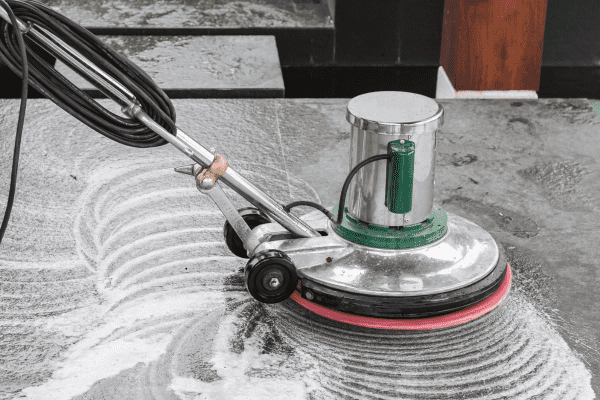Complete Guide to Polished Concrete Floors
Polished concrete floors are concrete surfaces that have been mechanically ground, honed, and polished using bonded abrasives to achieve a desired level of gloss and smoothness. This process enhances the natural beauty of concrete while improving its structural integrity and longevity.
These type of floors have become a popular choice in both residential and commercial spaces due to their durability, aesthetic appeal, and ease of maintenance. This guide by concrete experts will walk you through everything you need to know about polished concrete floors, from their benefits to installation and maintenance.
Benefits of Polished Concrete Floors
Durability and Longevity
These are exceptionally durable and can withstand heavy foot traffic and machinery, making them ideal for commercial spaces like warehouses, retail stores, and offices. Their longevity is one of their most appealing features; when properly maintained, these floors can last for decades without needing replacement.
Aesthetic Versatility
Concrete polishing gives you enormous benefits. It can be customized with various stains, dyes, and aggregates to create a wide range of colors and patterns. The level of sheen can also be adjusted, from a low, matte finish to a high, glossy shine, to match the desired aesthetic of the space.

Low Maintenance
One of the most significant benefits is their low maintenance requirements. Unlike other flooring options, polished concrete does not require waxing, stripping, or frequent resurfacing. Regular sweeping and occasional mopping with a pH-neutral cleaner are usually sufficient to keep the floor looking pristine.
Cost-Effective
While the initial installation of it may be higher than some other flooring options, their long-term cost-effectiveness makes them a smart investment. The durability and low maintenance costs translate to significant savings over time.
Eco-Friendly
Polished concrete floors are an environmentally friendly option as they often utilize the existing concrete slab, reducing the need for additional materials. Moreover, the process involves fewer chemicals compared to other flooring options, and the high reflectivity of polished concrete can help reduce lighting energy costs. So, all these points help to get an idea decorative concrete from ordinary space to best space.
Installation Process
The installation of these floors involves several steps, each crucial to achieving a high-quality finish.
Surface Preparation
The first step is to prepare the concrete surface by removing any existing coatings, adhesives, or sealants. This can be done using various methods, including shot blasting or chemical stripping. The surface must be clean and free of contaminants to ensure proper bonding of the polishing compounds.
Grinding
The next step involves grinding the concrete with progressively finer diamond abrasives. This process removes imperfections and levels the surface. The number of grinding steps and the coarseness of the abrasives depend on the condition of the concrete and the desired finish.
Polishing
The polishing phase involves using even finer diamond abrasives to achieve the desired level of shine. The floor is polished in multiple steps, each using a finer grit until the desired gloss level is achieved. This step can be adjusted to create a matte, satin, or high-gloss finish.

Sealing
Finally, a sealer is applied to protect the polished concrete from stains and spills. This sealer can be a penetrating or topical sealer, depending on the specific requirements of the space.
Maintenance of Polished Concrete Floors
Proper maintenance is essential to keep at its best. Here are some tips for maintaining these floors:
Regular Cleaning
Sweep or dust mop the floor daily to remove dirt and debris that can scratch the surface. For deeper cleaning, use a damp mop with a pH-neutral cleaner. Avoid harsh chemicals, as they can damage the finish.
Spill Management
Clean spills immediately to prevent staining. Although sealed polished concrete is resistant to stains, prolonged exposure to liquids can cause damage. Moreover, there are also other ways to magnify home beauty with concrete.
Periodic Polishing
Depending on the level of traffic, periodic repolishing may be necessary to maintain the floor’s shine. High-traffic areas may require more frequent polishing to keep the surface looking its best.

Avoiding Damage
Place mats at entryways to reduce the amount of dirt and grit tracked onto the floor. Use furniture pads to prevent scratches from heavy furniture and equipment.
Along with polished concrete, we will also suggest you to have a look at these decorative concrete benefits that it adds to your property. It can be a good addition.
Conclusion
Polished concrete floors offer a unique blend of durability, aesthetic appeal, and low maintenance, making them an excellent choice for a variety of settings. Understanding the benefits, installation process, and maintenance requirements can help you make an informed decision about whether polished floors are right for your space. We hope this guide to polished concrete floors will help you to make decision.







